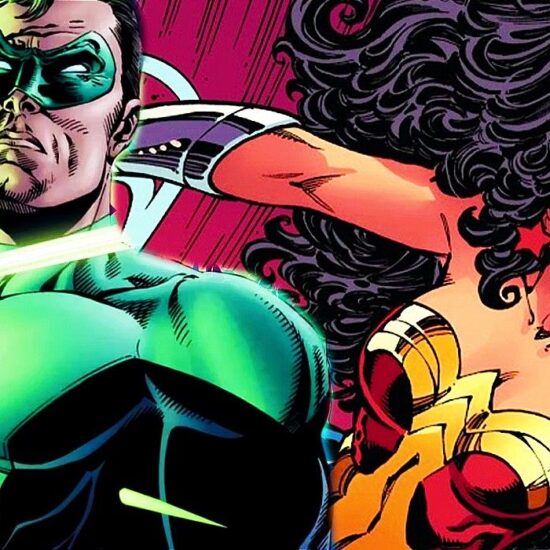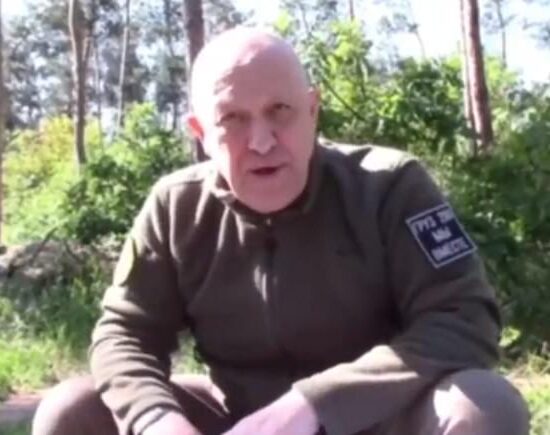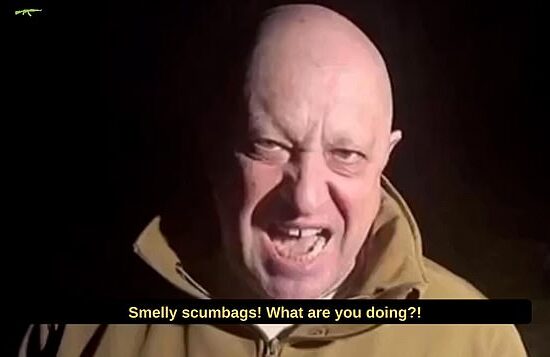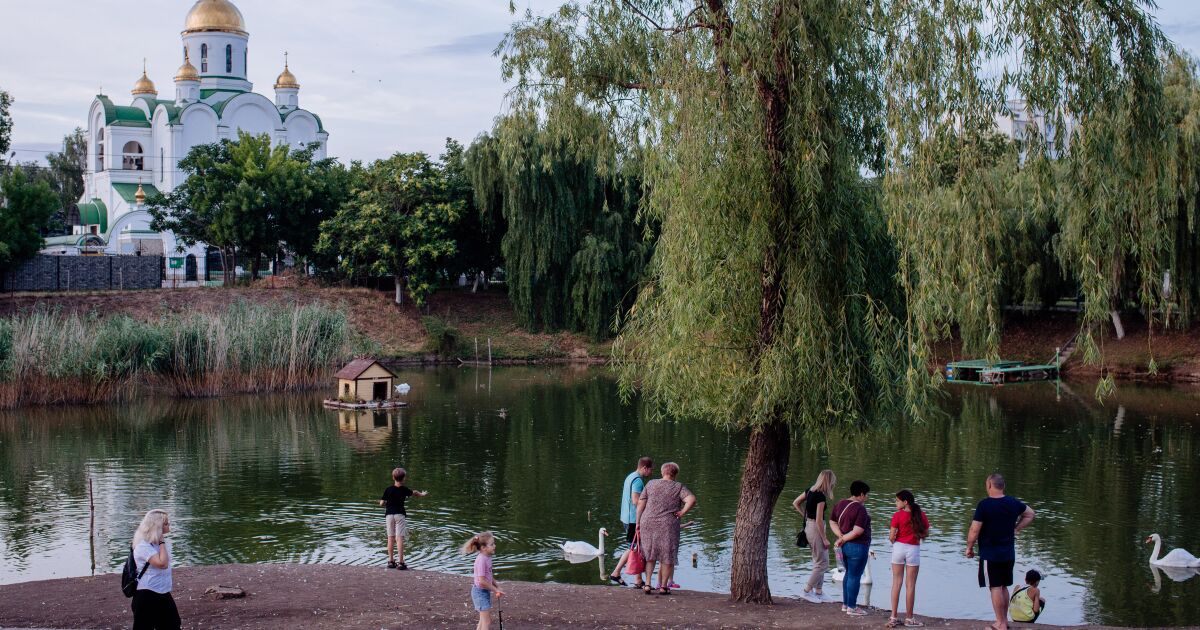
The hammer-and-sickle still flutters proudly over the park-lined thoroughfares in this capital of a country that doesn’t exist. The top of City Hall bears the Soviet star. And the street names — Strada Karl Marx, Strada Yuri Gagarin — hark back to bygone days of Soviet glory.
When you visit Transnistria, the unrecognized breakaway republic carved out of a strip of land between Ukraine and Moldova, the first impression is of a Soviet Union in the smartphone era, a place where couples take selfies near giant Lenin statues, and paeans to Communist leaders hang near billboards advertising “Guardians of the Galaxy Vol. 3.”
It’s one of the reasons why Transnistria, often portrayed as little more than a Soviet time capsule, has become a popular destination among travel bloggers and adventure tourists. But beneath the Communist kitsch lies a real affinity with Russia among the region’s 300,000 or so people, which up to now has been to their advantage.
Families stroll through one of the many parks in Tiraspol, Transnistria.
(Nabih Bulos / Los Angeles Times)
“People here feel Russian,” said Anatoly Dirun, a Transnistrian political scientist in grandly stodgy Tiraspol. “Not just as a nationality, but as a people who love Russia and want to belong to Russian civilization.”
That loyalty comes from Transnistria’s short history. In 1992, Russian troops helped people here beat back nationalists from next-door Moldova and establish the region as a sort of Rhode Island-sized Russia, run by pro-Moscow Russian speakers, defended by a Russia-funded army and security services, and kept afloat economically by a Russia-style currency and dirt-cheap Russian gas — all of this some 400 miles from the nearest Russian border.
The self-declared Pridnestrovian Moldavian Republic’s status as a de facto protectorate of Moscow — including its peaceful, if not totally friendly, modus vivendi with Moldova, which officially regards Transnistria as part of its territory — has largely worked for the last 30 years or so.
Up until Feb. 24, 2022, that is, when Russia invaded Ukraine. Suddenly, being so heavily identified with and reliant on its big brother to the east became a lot more complicated for Transnistria, also known as Trans-Dniester. Since then, the territory — which no country, not even Russia, recognizes — has had to adjust to some uncomfortable new realities, such as increased distrust from its neighbors and a greater dependence than ever on Moldova for its economic survival.
When the war began, suspicions immediately fell on Transnistria as another possible staging ground for invading Russian forces, prompting Ukraine to seal off their shared border. Then, when Moldova’s president condemned the invasion, natural gas supplies from Russia — which were delivered virtually free of charge via a pipeline running through Ukraine and which Transnistria used to produce electricity and iron for export — came under threat.
It was a quadruple whammy for Transnistria’s economy. The territory lost its role as a passageway for legal (and illegal) goods in and out of Ukraine, and no longer had a source of cheap gas. Import costs more than doubled. Visitors, alarmed by what was now considered a geopolitical powder keg, stayed away.
“I survived the war in ’92, so people like me aren’t afraid of conflict, but it’s been difficult for businesses,” said Alexander Kalish, 41, who owns the Back in the U.S.S.R. cafe in the border village of Bender. Since the invasion, his restaurant has drawn in half as many customers as usual.
With Ukrainian ports no longer accessible, all Transnistria’s exports now pass through Moldova, its ostensible adversary, with three-quarters of them either remaining there or going on to the European Union. Since Russia cut the gas supply by up to half, Moldova has been giving its supply of Russian gas virtually free of charge to Transnistria, whose power plants then convert it to electricity to sell back to Moldova at a cheaper price than the Moldovan government can get elsewhere.
The cooperativeness is a far cry from initial fears among some Transnistrians that Moldova would use the war in Ukraine as a pretext to retake their region by force and then merge with Romania to the west. (Ethnic Romanians make up the largest proportion of the Moldovan population.)
“Everyone was predicting war between Transnistria and Moldova. But Transnistria and Moldova have never been so close,” said Alexandru Lesanu, an independent researcher focused on post-Soviet quasi-states. “That’s the paradox of the situation.”
Transnistria has managed to avoid embroiling itself in the Ukraine war, despite the billions of dollars in subsidies it receives from Moscow, the 1,500 Russian peacekeeping troops on its soil and the occasional rumblings from the Kremlin that it will mobilize to protect Russian speakers in the region just as it claims to be doing in Ukraine. A Russian ammunition depot on Transnistria’s edge with Ukraine in the village of Cobasna, said to be Eastern Europe’s largest stockpile, remains untouched.
“Tiraspol authorities are not interested in being involved in this conflict,” said Dirun, the political scientist.
Get breaking news, investigations, analysis and more signature journalism from the Los Angeles Times in your inbox.
You may occasionally receive promotional content from the Los Angeles Times.
A visit to Tiraspol shows the war to be a distant concern. On a recent weekend, families enjoyed the early spring sun, some stopping to pick toys from street stalls or heading to a nearby market for pickles and preserved fruit. In one of the capital’s many parks, children coerced parents into giving them a push on rusty swings or going on carnival rides that had seen better days. Russian soldiers, young men in fatigues and masks covering half their faces, stood guard in some places, but overall maintained a low profile.
Some see in the increased economic cooperation with Moldova an opportunity to further push Transnistria into a political settlement that would see the two sides unify. But many here are wary of such ideas, insisting that the issues go beyond economics to thorny matters of identity.
After the collapse of the Soviet Union, the territory — a 1,600-square-mile enclave of mostly ethnic Russians and Ukrainians on the eastern bank of the Dniester River — opposed Moldova’s attempts to merge with Romania and declared itself a Soviet republic in 1990.
Moldova became independent a year later, and a brief but bloody war ensued, with Russia helping Transnistrians win their separatist bid. Despite lacking international recognition, the territory maintains its own border, currency, passports, pension scheme, national anthem and industrial economy, all underpinned by Russian largesse.
“Everyone respects Russia, and it couldn’t be otherwise. In 1992, only Russia extended a helping hand,” said Kalish, the cafe owner.
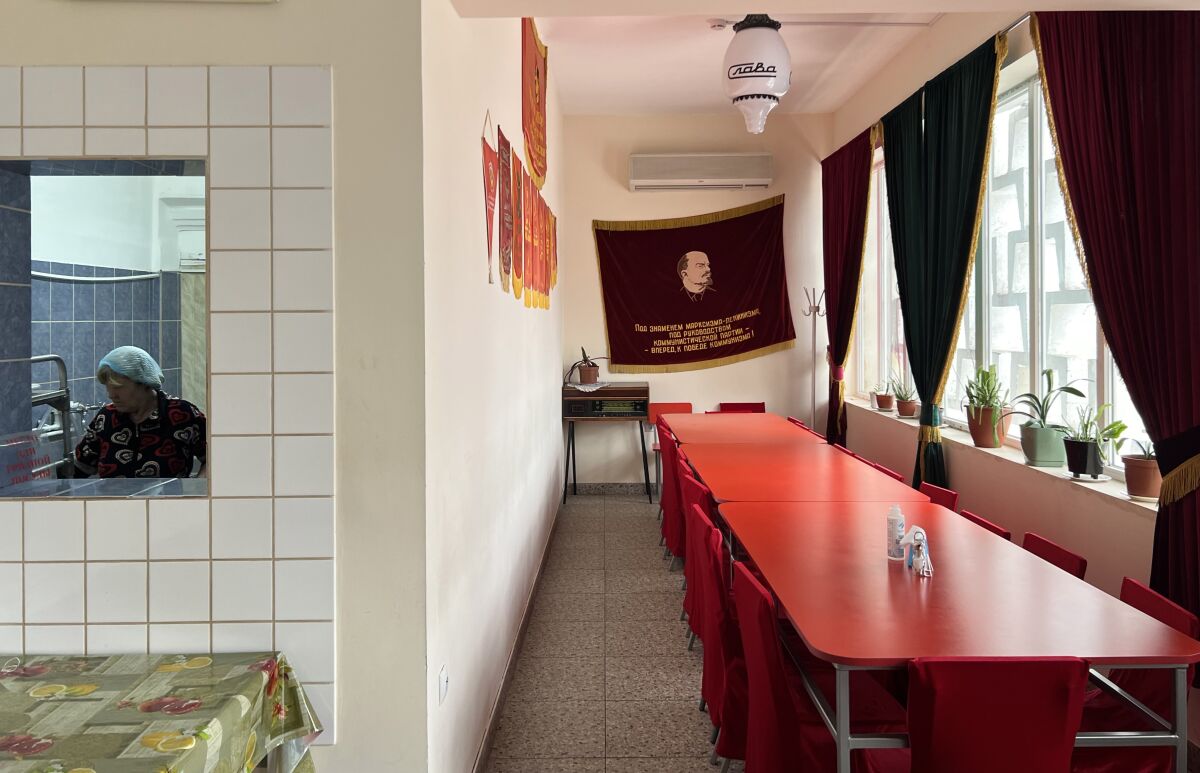
A serving of nostalgia is on the menu at the Back in the U.S.S.R. cafe in Bender, Transnistria.
(Nabih Bulos / Los Angeles Times)
His restaurant, on the second floor of a building near Bender’s downtown district, attests to that appreciation. Inside, customers eat under the gaze of busts of Lenin, posters of Soviet-era movie stars and a jovial bear donning Soviet regalia. The menu offers Soviet comfort food, with sausages, potato salad, soups including borscht and sour cream, and dessert with cherry and sour cream dumplings, all shining under a heat lamp.
Kalish opened the restaurant, he said, because the U.S.S.R. signified a pleasant memory for him and others of his generation.
“If you ask them, they say, ‘I had everything I needed in life.’ The U.S.S.R. was stability,” he said.
Though he didn’t consider Moldovans his enemy, the fact remained that they had a mentality more geared toward Romania, he added.
Thirty years ago, integration with Moldova might have been feasible, but “today, it is impossible — we are different people,” Kalish said. “There’s a whole generation who do not know anyone else except Russia.”
The result of that can be seen in the streets. The Russian tricolor is omnipresent, as is the Cyrillic alphabet. Russian is the lingua franca here. You can even spot the occasional “Z” sign, a reference to the marks painted on Russian materiel ahead of the Ukraine invasion.
For the young, the matter is more complicated. Though they weren’t born during the Soviet era, their education system is based on Russia’s, and many take on Russian passports for ease of travel and employment opportunities. But that means they could be drafted for Moscow’s war effort, said 26-year-old Sergei, who declined to give his last name to avoid reprisals.
“I don’t care about Russia or Putin, but there are people here who do. The problem is that it’s someone like me who would be mobilized if something happens, and I don’t want that,” he said, adding that four of his friends had already moved to Russia for work.
Andrei, a 22-year-old photographer from Bender, went the other direction, moving to Chisinau, the Moldovan capital, a few years ago.
He left Transnistria to avoid army service (which was why he didn’t give his last name), and he appreciates the freedoms he has in Chisinau, which aren’t matched at home. His photographic artwork would never be accepted there.
As a result, he feels caught in limbo — like so much about Transnistria, itself literally an in-between place.
“People in Ukraine can now say, ‘We’re Ukrainians,’ and live in Ukraine. People in Russia can say the same. But in Transnistria? We can’t say who we are,” he said.
“It’s not a country.”










